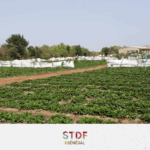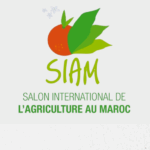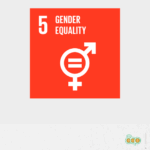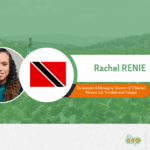Kenya: Consultative meeting with exporters of beans and peas with pods by the Horticultural Crop Directorate (HCD)
- 20/07/2022
- Posted by: Sandra Borma
- Category: Kenya, News

Kenya is a major exporter of horticultural produce to the European Union (EU) which constitutes 80% of total exports. The total value of horticultural exports reached 157.7 billion Kenya shillings (KSh) in 2021. Kenya’s beans and peas with pods have, over the years, enjoyed a sizeable market share in the EU. However, this is threatened by the numerous notifications that Kenya has been receiving of late. There is need for more engagement with industry players to ensure good quality, safe produce to enhance market access. The beans and peas with pods value chain represents an important foreign exchange earner and employment generator for Kenya. The country’s domestic value of horticulture production in 2018 was 248.47 billion KSh compared to 207.52 billion KSh in 2017, equivalent to an increase of 19.7%. From this, the value of vegetables exported was 52.22 billion KSh compared to 47 billion KSh in 2017, equivalent to an increase of 21% – source: HCD Horticulture Validated Report, 2017–2018.
The National Horticulture Taskforce, a platform for addressing multi-sectoral challenges in horticulture sub-sector, organised a delegation to the EU from 27 March to 8 April 2022 sponsored by the NExT Kenya programme. The main objective of the mission was to discuss the challenges and opportunities of the Kenyan horticulture industry. Among the countries visited were Belgium, France, the Netherlands, and Germany. Some of the issues raised were plant health and use of restricted pesticides, the Green Deal, the Farm to Fork Strategy, sustainability, sea transport, data collection and information sharing. To address the above challenges, achieve reduced notifications and remove Kenya from the risk list, there is need to address EU concerns and share feedback with exporters of beans and peas with pods.
Several initiatives have already taken place in collaboration with COLEACP to ensure market access. Such initiatives include development of a good practice guide for avocadoes – the guide was validated at a workshop on 17 May 2022. The development of a good practice guide for beans and peas with pods is almost complete in readiness to be presented to the sector. The guide of good practice that has been elaborated for the beans and peas with pods sector is based not only on the usual recommendations of good hygiene practices, but also on a systematic analysis approach of the “Hazard Analysis and Critical Control Point (HACCP)” type – analysis of the different stages of production, identification of hazards and evaluation of the level of risk – that has been applied to SPS risks within the sector. This purpose of this guide is:
- to facilitate the compliance of practices and products: to help professionals in the beans and peas with pods sector to control the commercial quality and SPS safety of products so that they meet the requirements of the destination market – national, regional or export
- to facilitate the recognition of compliance with standards and regulatory requirements by professionals: to obtain recognition of the capacity of operators in the sector by the local competent authorities and those of the destination market, regarding:
- demonstrating their capacity to effectively control SPS risks
- obtaining a more favourable “risk profile” that can reduce the burden of official control
- facilitating SPS inspections by communicating their “Integrated Control Plan” indicating the critical control points (CCP) in the processes and the control measures implemented;
- more easily obtaining certification of their SPS Quality Management System (SPSQMS) as well as export certification for their products – issuing Phytosanitary Certificates.
- to facilitate dialogue and the exchange of practices in the sector: to establish an open and permanent dialogue between private and public sector stakeholders in order to agree on control methods as well as on the internal controls that will have to be set up within companies, from the plot of land to the shipment of the finished product. The composition of the both the Technical Working Group and the Steering Committee is drawn from industry players from both the public and private sector and thus it is envisaged that they will initiate and manage this dialogue.
- to be a pedagogical tool: the good practice guide was written to be a pragmatic tool, facilitating the understanding of objectives, content and methods (e.g., HACCP) by professionals. A user manual explains how to implement the good practice guide recommendations, in a step-by-step manner, to be easily understood by those in charge of the beans and peas with pods sector and to be used by company managers, by production or packaging station managers, by quality and traceability managers or by inspectors in charge of official controls in the sector.
Risk profiling is an imperative activity for the regulators – the Kenya Plant Health Inspectorate Service (KEPHIS) and the Horticultural Crop Directorate (HCD); the results of the profiling that has already been done will be used to set management standards of the different exporters or consolidators. The HCD has been working with COLEACP on defining the objectives of the risk profile and establishing the risk profile tool to be used by exporters; a risk profile team has already been established. It is noted that horticulture industry players have agreed to develop a national risk register for beans and peas with pods exporters that will enhance the surveillance, inspection and testing done by HCD and KEPHIS, especially among high-risk companies thereby improving efficiency of the two regulators. Risk analysis should therefore adapt an internationally accepted framework that provides national food safety authorities with a systematic and disciplined approach to making risk and evidence-based food safety decisions. Risk analysis consists of three interactive components: risk assessment, risk management and risk communication. All these components are important in estimating the risk to human health and safety. An assessment of risk profiles available and used in Kenya for flowers and fine vegetables has been conducted. Risk profile tools have been developed and validated. The parameters of the risk profile register include quality assurance, technical capacity, institutional capacity, traceability, pesticide management, quality control measures, environmental awareness, hygiene measures, monitoring and evaluation, workers welfare, and new exporter’s accreditation to recognized standards. These parameters are gauged against control points, compliance criteria, level of risk, details of risk, likelihood of occurrence, consequence of risk, risk rating and mitigation actions.
An industry consultative meeting for exporters of beans and peas with pods in Kenya was held to review and give updates on the vegetable export status and discuss new developments and recommendations for ensuring food safety from production to consumption. The measures will improve the Kenyan vegetable market both globally and locally to ensure both better prices and better food safety to consumers.
This activity is implemented by COLEACP and supported by the NExT Kenya (New Export Trade) programme, established in collaboration with the EU Delegation in Nairobi and Kenyan stakeholders.





